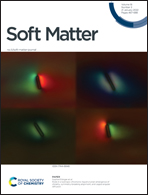Swift catalytic reduction of hazardous pollutants by new generation microgels†
Abstract
In this manuscript, we report for the first time a new generation microgel synthesis without using any divinyl functionalized cross-linker. A new generation less crosslinked microgel structure has been achieved by optimizing the amount of N-hydroxy methyl acrylamide (NHMA) and using a fixed amount of styrene (St), acrylic acid (AA) and N-vinyl pyrrolidone (NVP) via a free radical emulsion solution polymerization technique. Poly(NHMA) works as a hydrophilic as well as a crosslinking agent. Furthermore, microgels have been upgraded into a composite by incorporation of Ag nanoparticles for catalytic reduction applications. Microgels and their composites have been characterized by EDAX, FT-IR, particle size analyzer, SEM, TEM, TGA, UV-vis spectroscopy and XRD. Methylene blue (MB) dye and p-nitrophenol (PNP) were chosen as model hazardous pollutants for catalytic reduction applications. Microgels efficiently adsorb both pollutants over the surface and microgel_Ag composites dramatically reduced both pollutants in the non-toxic form at room temperature by using smaller doses of NaBH4.



 Please wait while we load your content...
Please wait while we load your content...